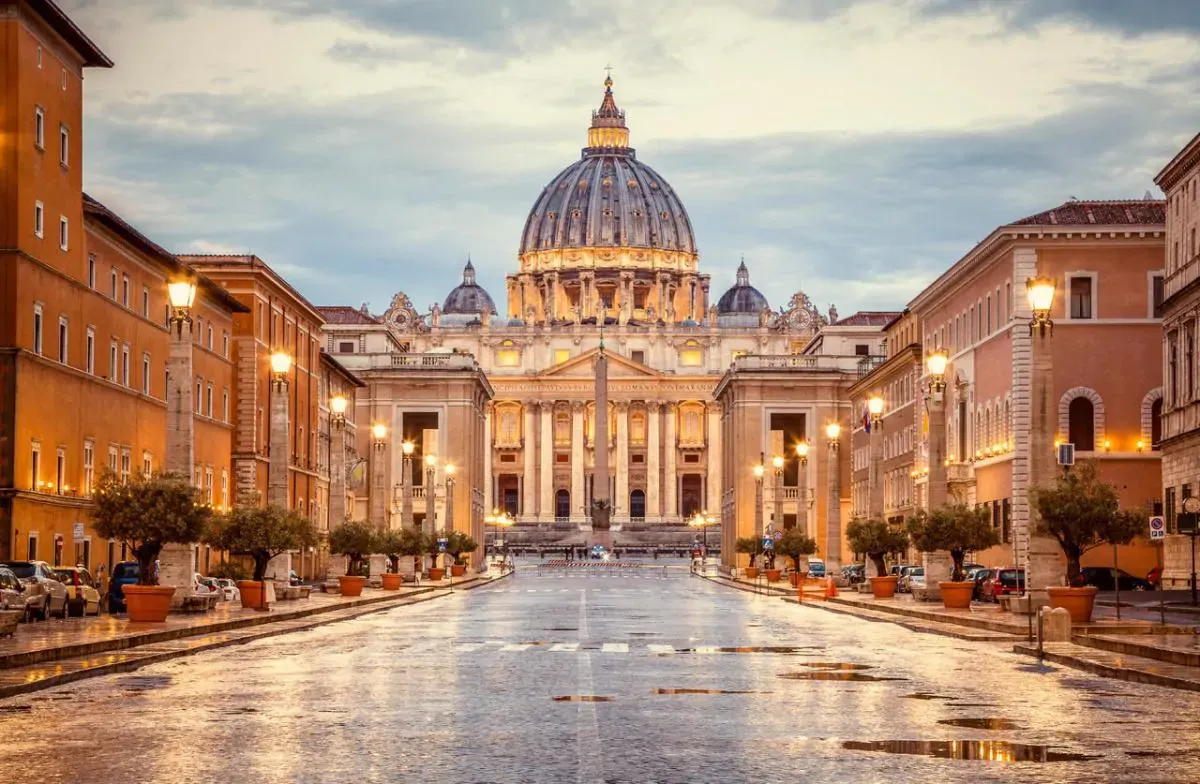Why I Want the Next Pope to Unite the Old With the New
The younger generation is returning to the Catholic Church because of its traditions, not in spite of them.

The younger generation is returning to the Catholic Church because of its traditions, not in spite of them.

By Anthony Di Mauro
Special thanks to National Catholic Register for publishing this piece.
In Pope Francis’ 2022 apostolic letter Desiderio Desideravi (On the Liturgical Formation of the People of God), he made a striking call for deeper reverence in the liturgy.
He wrote:
“I want the beauty of the Christian celebration and its necessary consequences for the life of the Church not to be spoiled by a superficial and foreshortened understanding of its value or, worse yet, by its being exploited in service of some ideological vision, no matter what the hue.”
My hope is that the next pope will follow in Pope Francis’ words in resisting the pull of surface-level spirituality and stand firm against worldly pressures that threaten what is sacred.
Above all, he must possess humility.
As St. Teresa of Avila said:
“Humility, humility, oh humility — through this the Lord allows Himself to be vanquished and grants us all we ask.”
The Pacific Northwest, known for its natural beauty, is a land rich with potential, being that it is the most unchurched region of the United States. Where the Archdiocese of Seattle is consolidating parishes due to low attendance, Spokane, the second largest city in the state and former spiritual center of America, is witnessing a growing movement toward reverence, beauty and tradition within the Church.
A clear example of this is St. Peter’s, the parish where I was raised. Built in the 1960s, its original design reflected the architectural priorities of the time, removing the tabernacle from the sanctuary and placing Jesus in a side chapel.
Today, St. Peter’s is undergoing a full renovation to restore the sacred beauty of the Catholic faith. Recently, I had the honor of giving the pastor a relic of St. Peter to be placed in the new altar, a sacred element the church never had. As a young Catholic, I long to see Christ once again placed at the center of our churches, both physically and spiritually.

This Easter, we saw a record number of conversions to the Catholic faith. When asked what drew them in, many responded with just three words: awe, awe, and awe.
As I reflect on the future of the Church, I pray the next pope will be a true unifier. We regularly hear of bishops or priests suppressing tradition and beauty in favor of surface-level expressions of faith. Public figures who openly reject Church teaching continue to receive Communion without consequence. This sends a confusing message and deeply troubles young people like myself who hunger for reverence and truth. We need a pope who will boldly stand for majesty and fight for the young people who are seeking it.
This is not an isolated concern. Among my peers in their 20s and 30s, many are tired of a watered-down Christianity. We are returning to the Church because of its traditions, not in spite of them.
When I asked friends what they hope for in the next pope, one shared:
“I long for a pope who takes strong, unwavering stances, yet offers tender encouragement to young people navigating the brokenness of modern dating, the attack on women, and the slow unraveling of marriage and family.”
In this grassroots revival among the laity, we yearn for a pope who can truly hear the voice of the faithful and guide us with wisdom. Only God can appoint the right man for the task, but our prayer is for a leader who draws from the richness of both the old and the new. I’ve heard this vision described as the “Traditional Novus Ordo Mass,” where Latin, reverence and the vernacular are seamlessly woven into a liturgy that stirs the soul. The next pope needs to be one who can bring about balance within all our expressions of Catholicism.

One such tradition experiencing a renaissance is the veneration of relics. Few are aware that there is only one person on earth authorized to restore and authenticate them. But relics matter. Often shoved under the rug, they are powerful tools of evangelization. In my ministry, The Relic Project, we share the gospel message in under 90 seconds, often with those who’ve never stepped foot in a church.
Curiosity draws people in, and from there, faith can take root. Some traditions may seem strange, like relics, but it is often the mysterious that leads people to ask deeper questions: Why do we do this? Where did this come from? Why does one church reflect beauty, and another seem empty?
Let the next pope be humble enough to bring unity, courageous enough to speak truth, strong enough to confront modern errors, and obedient enough to follow the will of the Lord.
The Church is made up of human beings, and so mistakes will always happen. But with humility, grace, and truth, the next chapter can be one of healing, beauty, and renewal.

